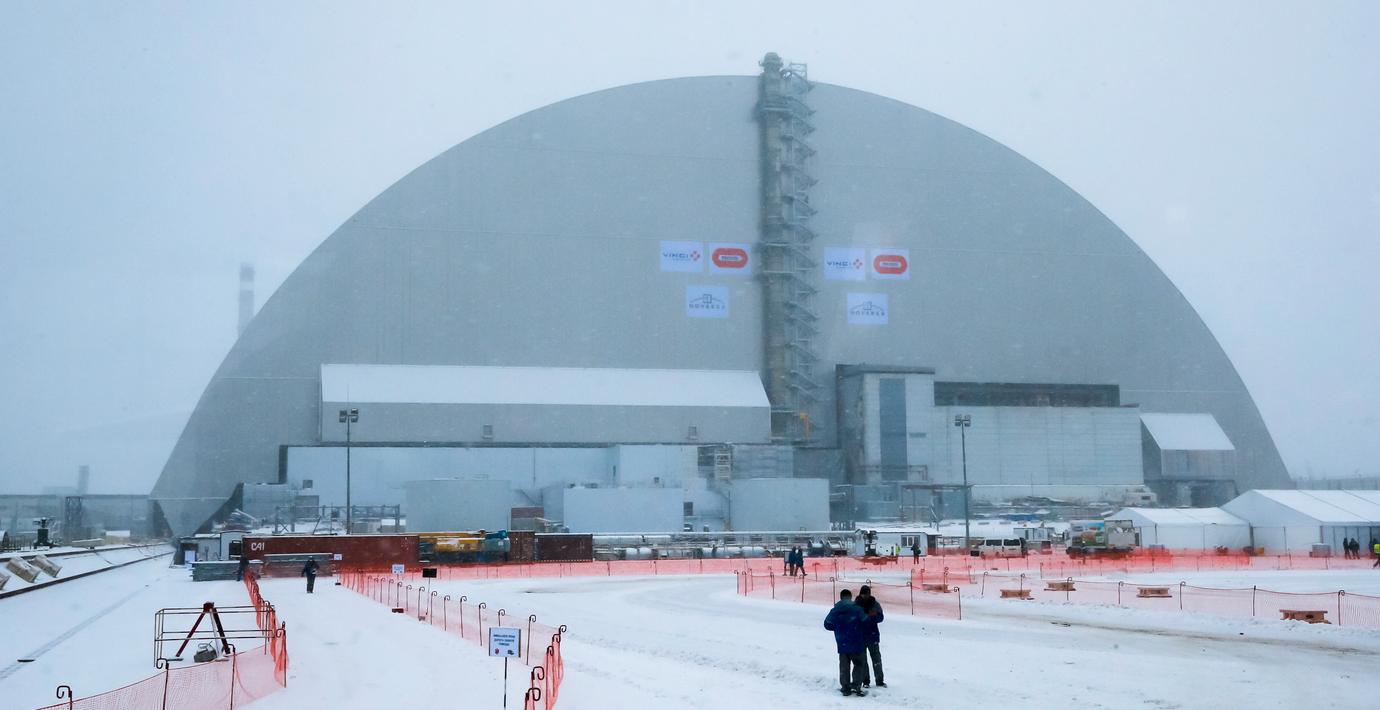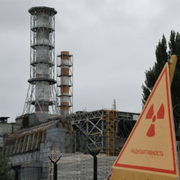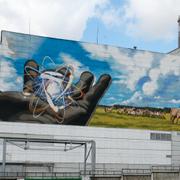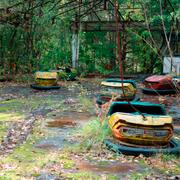
Nytt skyddshölje på plats över reaktor i Tjernobyl
Världens största rörliga metallkonstruktion har nu placerats över reaktor fyra i Tjernobyl för att skydda Europa från radioaktivitet i 100 år, rapporterar AFP.
Konstruktionen är stor som två fotbollsplaner, högre än frihetsgudinnan och väger 36 000 ton. Den har placerats över den nu läckande betongsarkofag som byggdes under kaotiska förhållanden direkt efter härdsmältan i Tjernobyl i april 1986.
bakgrund
Tjernobylkatastrofen
Wikipedia (en)
The Chernobyl disaster, also referred to as the Chernobyl accident, was a catastrophic nuclear accident that occurred on 26 April 1986 in the No.4 light water graphite moderated reactor at the Chernobyl Nuclear Power Plant near Pripyat, in what was then part of the Ukrainian Soviet Socialist Republic of the Soviet Union (USSR).
During a hurried late night power-failure stress test, in which safety systems were deliberately turned off, a combination of inherent reactor design flaws, together with the reactor operators arranging the core in a manner contrary to the checklist for the stress test, eventually resulted in uncontrolled reaction conditions that flashed water into steam generating a destructive steam explosion and a subsequent open-air graphite "fire", which produced updrafts for 9 days lofting plumes of radioactive isotopes into the atmosphere, in total approximately equaling the quantity of airborne material initially released in the explosion, with practically all of this material then going on to fall-out onto much of the surface of the western USSR and Europe.
The Chernobyl disaster was the worst nuclear power plant accident in history in terms of cost and casualties. It is one of only two classified as a level 7 event (the maximum classification) on the International Nuclear Event Scale, the other being the Fukushima Daiichi nuclear disaster in Japan in 2011. The struggle to safeguard against scenarios which were, at many times falsely, perceived as having the potential for greater catastrophe and the later decontamination efforts of the surroundings, ultimately involved over 500,000 workers and cost an estimated 18 billion rubles. During the accident, blast effects caused 2 deaths within the facility and later 29 firemen and employees died in the days-to-months afterward from acute radiation syndrome, with the potential for long-term cancers still being investigated.
The remains of the No.4 reactor building were enclosed in a large sarcophagus (radiation shield) by December 1986, at a time when what was left of the reactor was entering the cold shut-down phase; the enclosure was built quickly as occupational safety for the crews of the other undamaged reactors at the power station, with No.3 continuing to produce electricity into 2000.
The accident motivated safety upgrades on all remaining Soviet-designed reactors in the RBMK (Chernobyl No.4) family, of which eleven continued to power electric grids as of 2013.
Omni är politiskt obundna och oberoende. Vi strävar efter att ge fler perspektiv på nyheterna. Har du frågor eller synpunkter kring vår rapportering? Kontakta redaktionen



